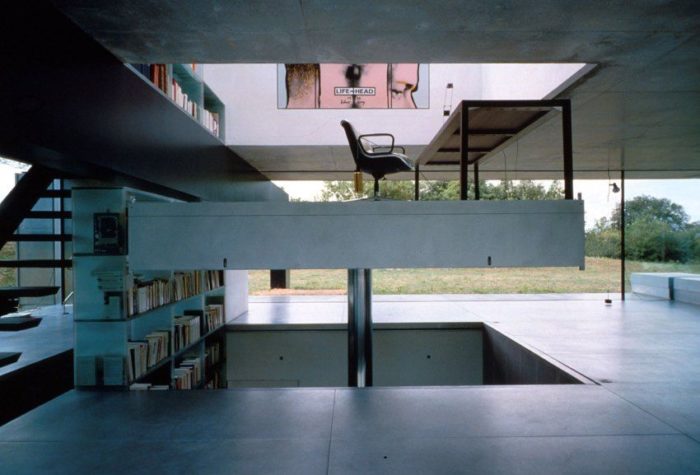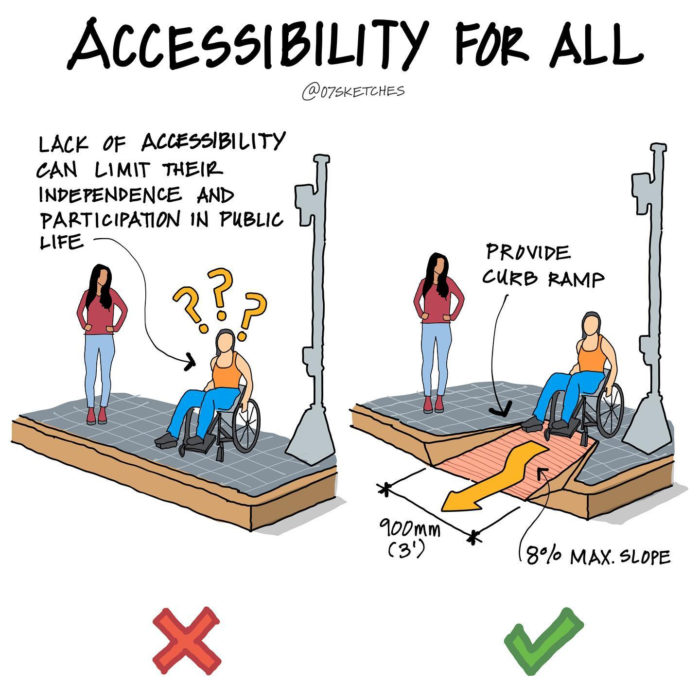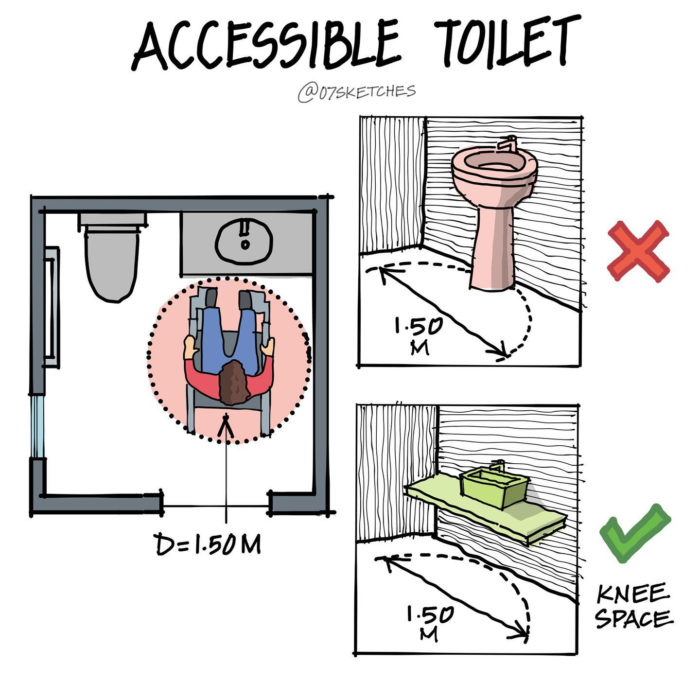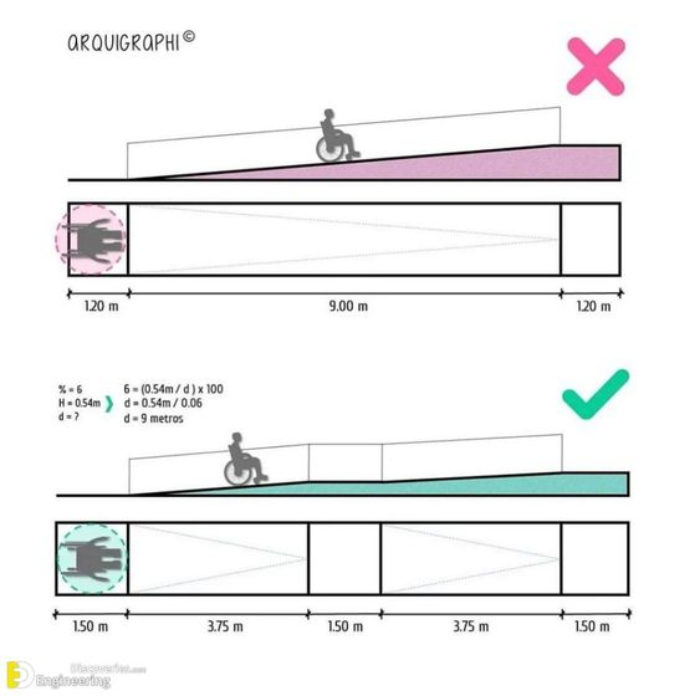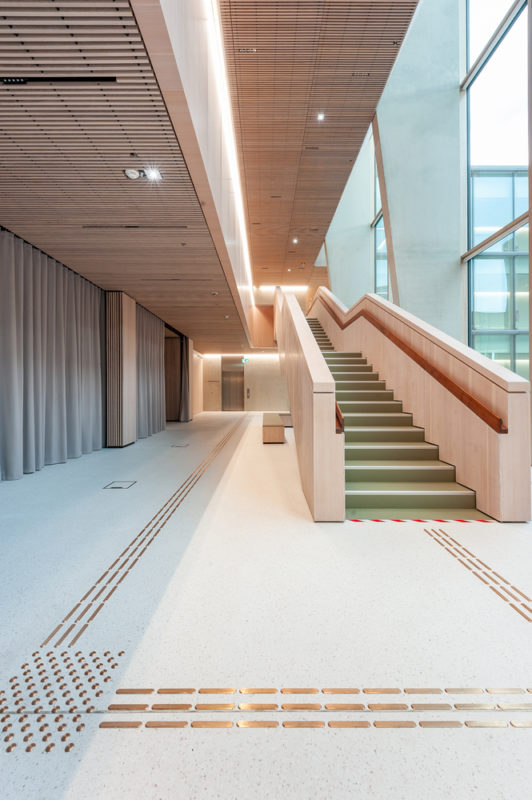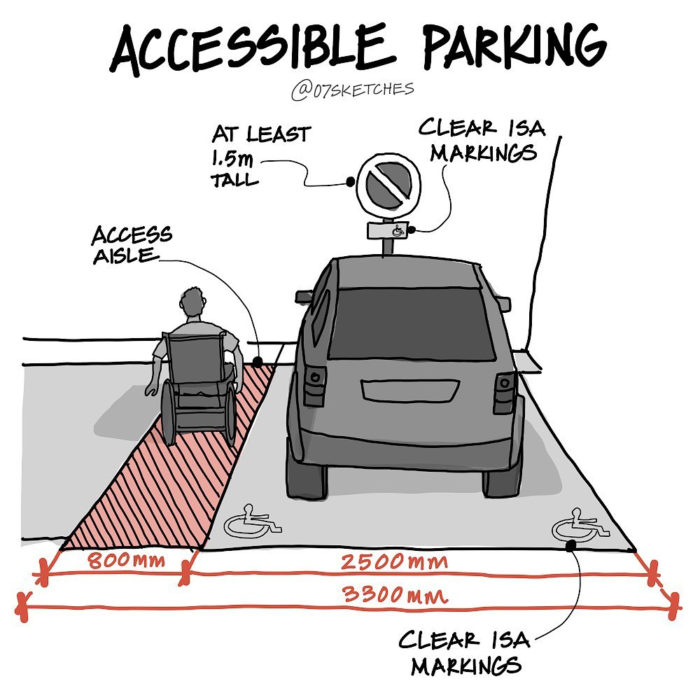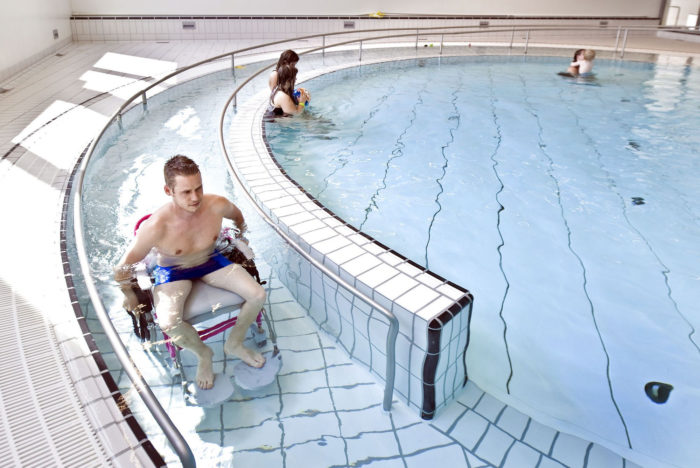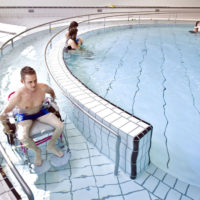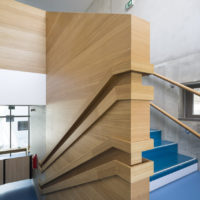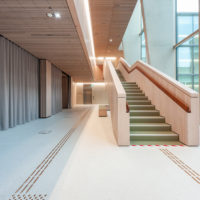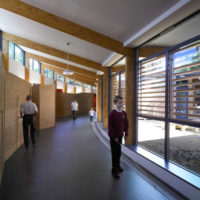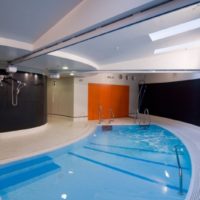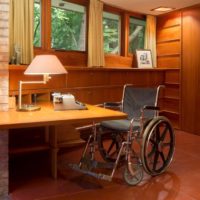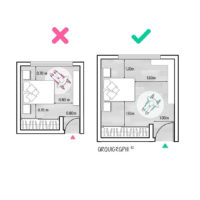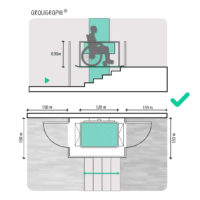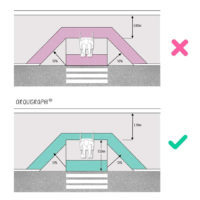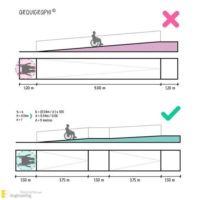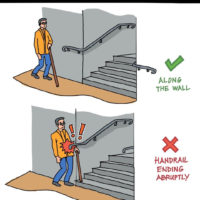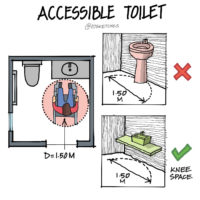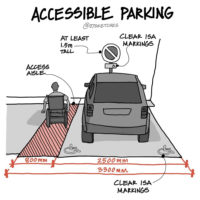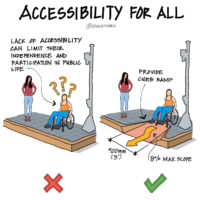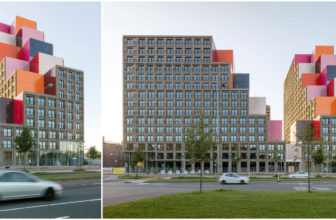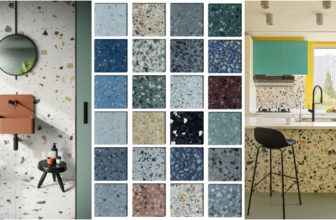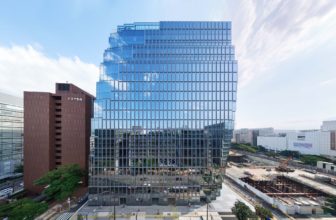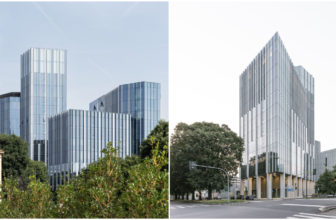Designers and brands must recollect the desires of People With Disabilities and make their products more available. By wandering ahead and implementing easy, instantaneous adjustments, they are able to make sure that people with disabilities can, without problems, use and gain from their products. This consists of outdoor shading systems, which can be changed to accommodate accessibility necessities. Designers and brands need to prioritize inclusivity and create products that may be loved by anyone, irrespective of People With Disabilities.
What Is Accessibility?
Accessibility is the design and creation of products, devices, offerings, or environments for People with disabilities. Accessibility aims to make sure that everybody can use and benefit from the things that are available to them, irrespective of their bodily or cognitive skills.
For Example: giants like Google are making use of augmented fact to enhance communication by incorporating capabilities like transcription and translation into our visual view, thereby facilitating less difficult connections. Additionally, the Ecoclic container from Ariel, a laundry brand, has been recognized with a Cannes Lions award for its revolutionary and sustainable design. The field is completely recyclable, FSC-certified, and created from recycled fibers. It is a person-friendly two-button ergonomic opening device, making it inclusive and intuitive for adults. Furthermore, the container gives clean establishing commands, ensuring that it may be opened without problems using adults with various impairments, along with those related to skill, vision, and cognition.
Accessibility In Architecture
Accessibility in architecture is ready to develop inclusive and usable areas for as many people as possible, which includes people with disabilities. This way, thinking about factors like narrow corridors, inconveniently positioned switches, and uneven flooring can pose tremendous challenges for people with disabilities. Architects prioritize accessibility while designing buildings and areas, aiming to stabilize the wishes of different users. For instance, they need to recall the necessities of a person in a wheelchair while also accommodating people pushing strollers. The intention is to expand adaptive designs that sell accessibility for everybody, including people with disabilities or chronic illnesses.
The Importance of Inclusive Design in Architecture
The inclusive design considers factors of coloration choices, room arrangement, and accessibility for people of all genders, sizes, ages, and abilities. This method, additionally referred to as standard design, goals to make spaces available to every body. Universal design is not just a unique requirement, however a fundamental thing of high-quality layout and practice. In the future, placemaking in structure will be crucial for developing inclusive architectural systems.
Strategies to Enhance Accessibility for People With Disabilities
There are several strategies that can be hired to enhance the accessibility of designs and products. Even small adjustments could have a sizeable impact, and each element performs a position in creating a product or emblem extra reachable. This consists of the visible appearance, the language used, the tactile experience, the auditory factors, or even the written content material. Each of these sensory factors offers an opportunity to enhance accessibility and make certain that everyone can absolutely interact with a product or a design.
By designing on-hand rooms, architects can foster innovation in their initiatives. The constraints they face activate them to explore diverse options and method the task from a new attitude. Depending on the assignment, exceptional forms of studies are vital. For example, when designing a personal house, architects ought to take into account the needs of the residents. This approach no longer only advantages the mission and encourages clean thoughts; it additionally makes the disabled populace feel valued and covered by way of inquiring for their entry. Inclusive design encompasses not only the simplest complete systems but also appliances, furnishings, and interiors. For instance, it may consist of gender-impartial public restrooms or furniture designed for individuals with hearing impairments.
Here are some examples about an inclusive design
– To prevent poor design, especially for people with disabilities, it is crucial to involve a diverse group of people in the design process. Instead of designing for them, it is more effective to design with them. This collaborative method ensures that you are on the right path.
– There needs to be more attention given to venues for people with hearing loss as compared to those for human beings with confined mobility or vision impairments. It emphasizes the importance of considering various factors while growing areas for people with listening to loss, which include the room’s association. Using a huge or round association in place of a linear layout to permit better communication and visibility among all events.
– To ensure the safety of pedestrians for People With Disabilities, current architectural buildings prioritize incorporating ramps, graphic protection additives, and automated doorways into their designs from the very beginning.
– Improving the sound in indoor areas includes decreasing echoes and loud noises that can cause soreness and distress to people with listening impairments. This may be completed by way of strategically placing sound resources or the use of sound-absorbing materials.
– To enhance the sensory revel and offer data to visually impaired individuals, it’s miles vital to incorporate gadgets in the construction of homes and public areas. This device needs to cater to the tactile, auditory, and olfactory senses.
– Using tactile paving, especially corduroy threat caution tiles. These tiles serve the reason of alerting people to potential risks together with ramps, steps, or platforms. They can be made from one-of-a-kind substances and are hired in numerous methods across specific countries. This highlights the significance of incorporating tactile surfaces into the construction layout and suggests the want for, in addition, the exploration of progressive principles inside destiny.
The Duty Of Architects
Architects have performed an essential position in elevating awareness of incapacity and creating inclusive structures that help individuals with disabilities in various settings, which include residences, faculties, and healthcare centers. These structures incorporate functions and designs that cater to the specific wishes of humans with disabilities, making sure accessibility and equal opportunities for all. The efforts of architects in this regard have significantly contributed to promoting inclusivity and improving the quality of life for people with disabilities.
Meeting Unique Needs: The accessible Landscape
The growing recognition of social responsibility and the general public’s demand for inclusive spaces has resulted in a boom in the availability of amenities and infrastructure designed to deal with individuals with unique desires. This includes street furniture, landscape, and mechanical devices strategically positioned at extraordinary elevations and building entrances.
Raising Awareness about Disability and Accessibility for Architects
The significance of accessibility in design goes beyond simply following requirements. It additionally is predicated on the clothier’s empathy and knowledge of the desires of end-users. To obtain this, it’s essential to boost awareness about disability and accessibility. This information needs to be used to teach professionals, which include architects, designers, landscape architects, and planners. There are exceptional design techniques that can be used to create shielding structures or promote accessibility in architecture.
There is a need to focus more on inclusive design in architecture. Architecture schools should encourage People With Disabilities to pursue careers in the field to influence the design and production of projects. Inclusive design should be integrated into the design process itself, as architects recognize that the needs of disabled individuals are not distinct from those of the general population. While current efforts to achieve accessibility in buildings are commendable, everyone needs to unite and support each other in promoting and incorporating all types of users, aiming for universal design and equality. This is the essence of accessibility in architecture.
In your opinion, what steps should architects take to ensure their designs are accessible to all individuals?
- © Martin Schubert
- © Martin Schubert
- © Martin Schubert
- © Sergio Grazia
- © Pandomo
- © Alan Dunlop Architect
- © Alan Dunlop Architect
- Ken Laurent’s wheelchair in his Frank Lloyd Wright-designed home. (Nels Akerlund)
- © Hans Werlemann
- © arquigraphi
- © arquigraphi
- © arquigraphi
- © arquigraphi
- © 07sketches
- © 07sketches
- © 07sketches
- © 07sketches


